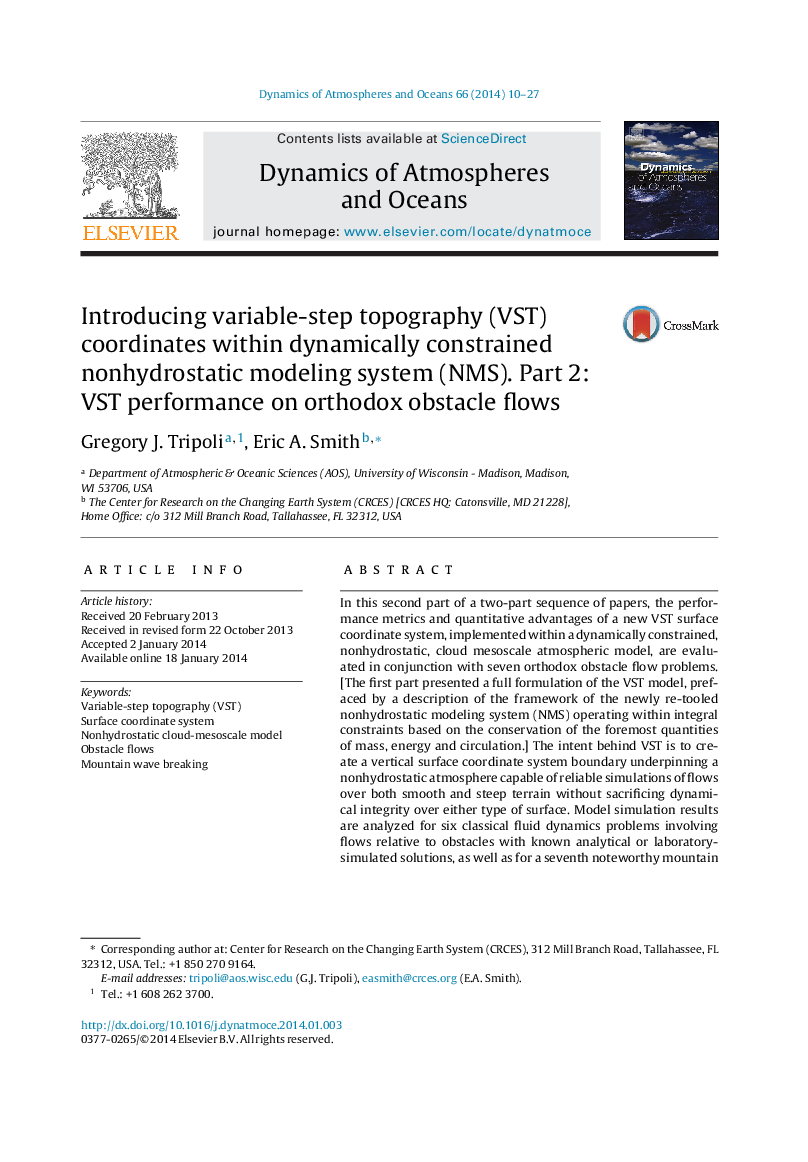| کد مقاله | کد نشریه | سال انتشار | مقاله انگلیسی | نسخه تمام متن |
|---|---|---|---|---|
| 4674027 | 1634224 | 2014 | 18 صفحه PDF | دانلود رایگان |

• Quantitative advantages of VST surface coordinate system explained within framework of nonhydrostatic modeling system (NMS).
• Performance metrics of VST surface coordinate system described in conjunction with set of seven orthodox obstacle flow problems.
• NMS-VST model simulation results compared for six obstacle flows vis-à-vis those with known analytical or laboratory-simulated solutions.
• NMS-VST result also compared for mountain wave breaking case having known observational and theoretical properties, plus comparative numerical solutions.
• VST coordinates ideally suited for scalable, nonhydrostatic atmospheric model safeguarded with physically realistic dynamical conservation constraints.
In this second part of a two-part sequence of papers, the performance metrics and quantitative advantages of a new VST surface coordinate system, implemented within a dynamically constrained, nonhydrostatic, cloud mesoscale atmospheric model, are evaluated in conjunction with seven orthodox obstacle flow problems. [The first part presented a full formulation of the VST model, prefaced by a description of the framework of the newly re-tooled nonhydrostatic modeling system (NMS) operating within integral constraints based on the conservation of the foremost quantities of mass, energy and circulation.] The intent behind VST is to create a vertical surface coordinate system boundary underpinning a nonhydrostatic atmosphere capable of reliable simulations of flows over both smooth and steep terrain without sacrificing dynamical integrity over either type of surface. Model simulation results are analyzed for six classical fluid dynamics problems involving flows relative to obstacles with known analytical or laboratory-simulated solutions, as well as for a seventh noteworthy mountain wave breaking problem that has well-studied numerical solutions. For cases when topography becomes excessively severe or poorly resolved numerically, atmospheric models using transform (terrain-following) coordinates produce noteworthy errors rendering a stable integration only if the topography is smoothed. For cases when topography is slowly varying (smooth or subtle), models using discrete-step coordinates also produce noteworthy errors relative to known solutions. Alternatively, the VST model demonstrates that both limitations of the two conventional approaches, for the entire range of slope severities, can be overcome. This means that VST is ideally suited for a scalable, nonhydrostatic atmospheric model, safeguarded with physically realistic dynamical constraints.
Journal: Dynamics of Atmospheres and Oceans - Volume 66, June 2014, Pages 10–27